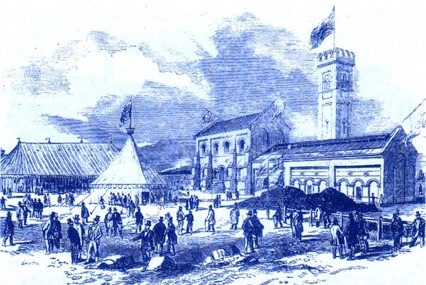Water is an essential resource that sustains life on Earth. Throughout history, humans have developed various methods to harness and distribute water for domestic, industrial, and agricultural purposes. While many of these techniques have been well-documented and widely adopted, there are several innovative waterworks designs in UK history that have been largely forgotten. In this article, we will explore these revolutionary waterworks designs that have the potential to reshape our understanding of water management and conservation.
The Aqueduct of the Romans: A Marvel of Engineering
One of the most remarkable waterworks designs in UK history is the Aqueduct of the Romans. Built during the Roman occupation of Britain, the aqueduct served as a sophisticated system of water supply and distribution. The Romans ingeniously utilized gravity to transport water from distant sources to urban centers. This engineering marvel consisted of a series of arches and channels that carried water over long distances, ensuring a steady supply for various purposes.
Harnessing the Power of Nature: The Waterwheel
Centuries after the decline of the Roman Empire, another groundbreaking innovation emerged in the form of the waterwheel. This simple yet ingenious device utilized the power of flowing water to generate mechanical energy. Waterwheels were widely used in mills and factories, driving machinery and facilitating the production of goods. The ability to harness water’s energy revolutionized various industries, contributing to the growth and development of the UK’s industrial sector.
Victorian Splendor: The Reservoirs of London
During the Victorian era, as urbanization accelerated, the need for a reliable water supply became paramount. To meet this demand, the construction of reservoirs became a significant endeavor. These reservoirs, such as the iconic London reservoirs, were architectural marvels in their own right. They not only provided a vast storage capacity for water but also served as picturesque landmarks. These reservoirs were integrated into the city’s landscape, showcasing the grandeur of Victorian engineering and adding to the charm of the city.
The Lost Art of Well Design
Before modern water distribution systems, wells played a crucial role in supplying water to communities. However, the art of well design has largely been forgotten. In the past, wells were constructed with meticulous precision, considering factors such as geology, hydrology, and even spiritual beliefs. The construction of wells involved a deep understanding of the underground water table and the ability to tap into it effectively. Today, this knowledge has been overshadowed by modern techniques, leading to the neglect of traditional well designs.
Innovations in Rainwater Harvesting
As the world grapples with water scarcity and the need for sustainable water management, ancient techniques such as rainwater harvesting are being rediscovered. Rainwater harvesting involves collecting and storing rainwater for future use. This simple yet effective method can be traced back to ancient civilizations, where it was employed to overcome water shortages. By capturing rainwater from rooftops and other surfaces, communities can reduce their reliance on traditional water sources and conserve water for essential needs.
The Future of Waterworks: Desalination Plants
In recent years, desalination plants have emerged as a potential solution to water scarcity. These innovative facilities use advanced technology to remove salt and other impurities from seawater, making it safe for consumption and other purposes. Though desalination is energy-intensive, ongoing research and development aim to make the process more sustainable and cost-effective. By harnessing the vast reserves of seawater, desalination plants have the potential to revolutionize water supply systems, particularly in coastal areas with limited freshwater resources.
Conclusion
The history of waterworks designs in the UK is rich with forgotten innovations that have shaped our understanding of water management. From the aqueducts of the Romans to the Victorian reservoirs, these revolutionary designs have left a lasting impact on our society. While some techniques have been overshadowed by modern advancements, there is value in rediscovering and reevaluating these forgotten innovations. By learning from the past, we can pave the way for a more sustainable and resilient future in water management.
